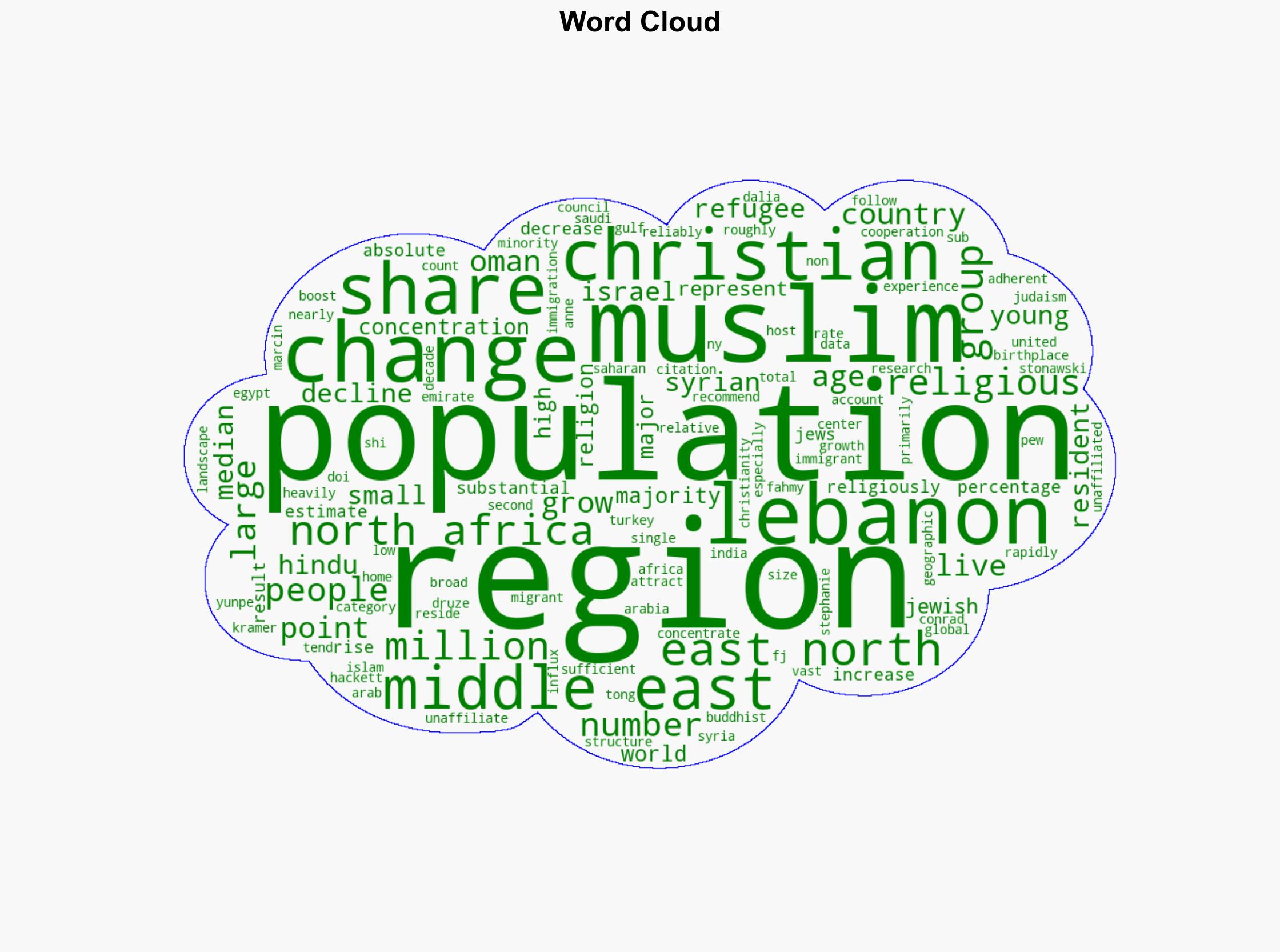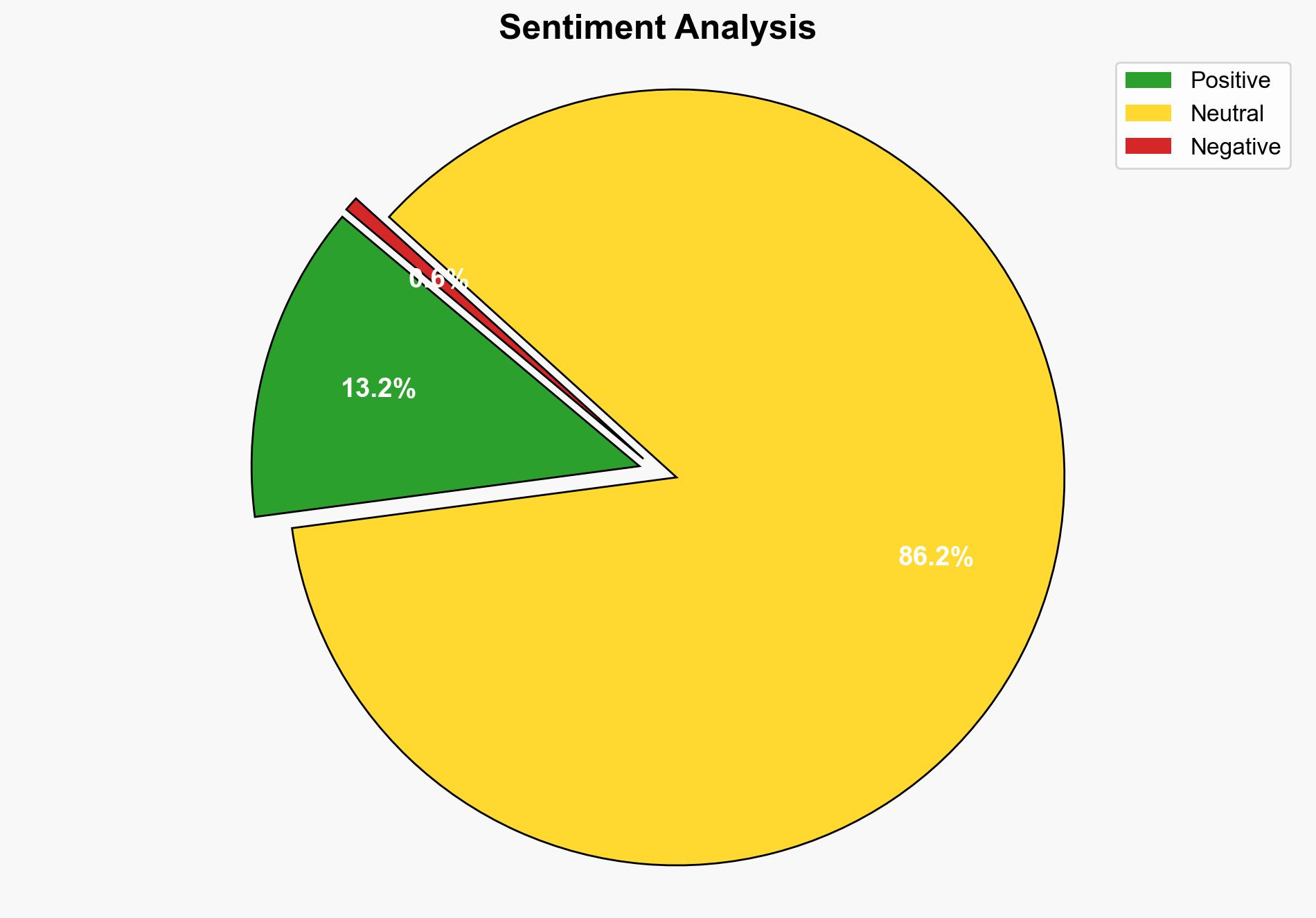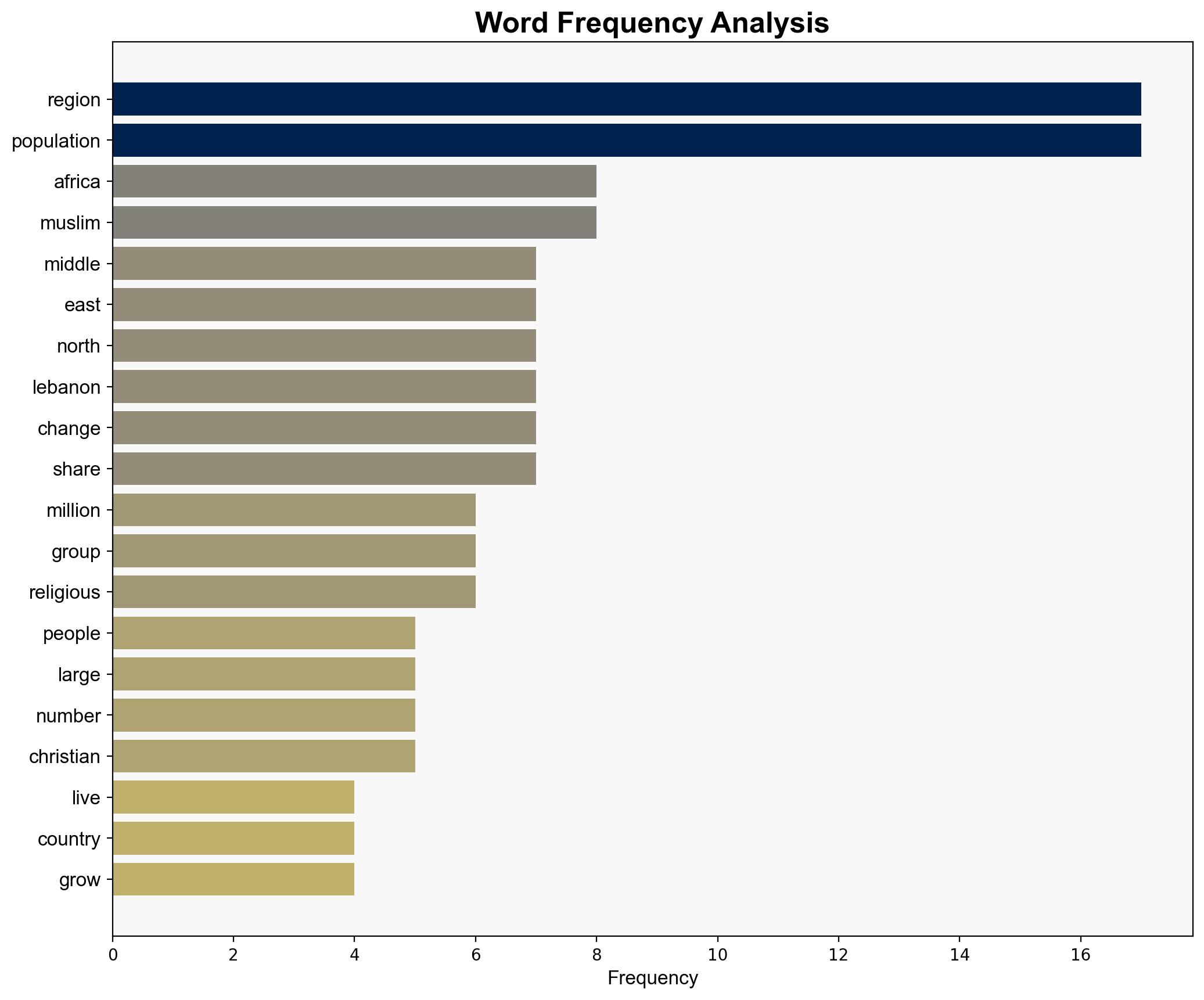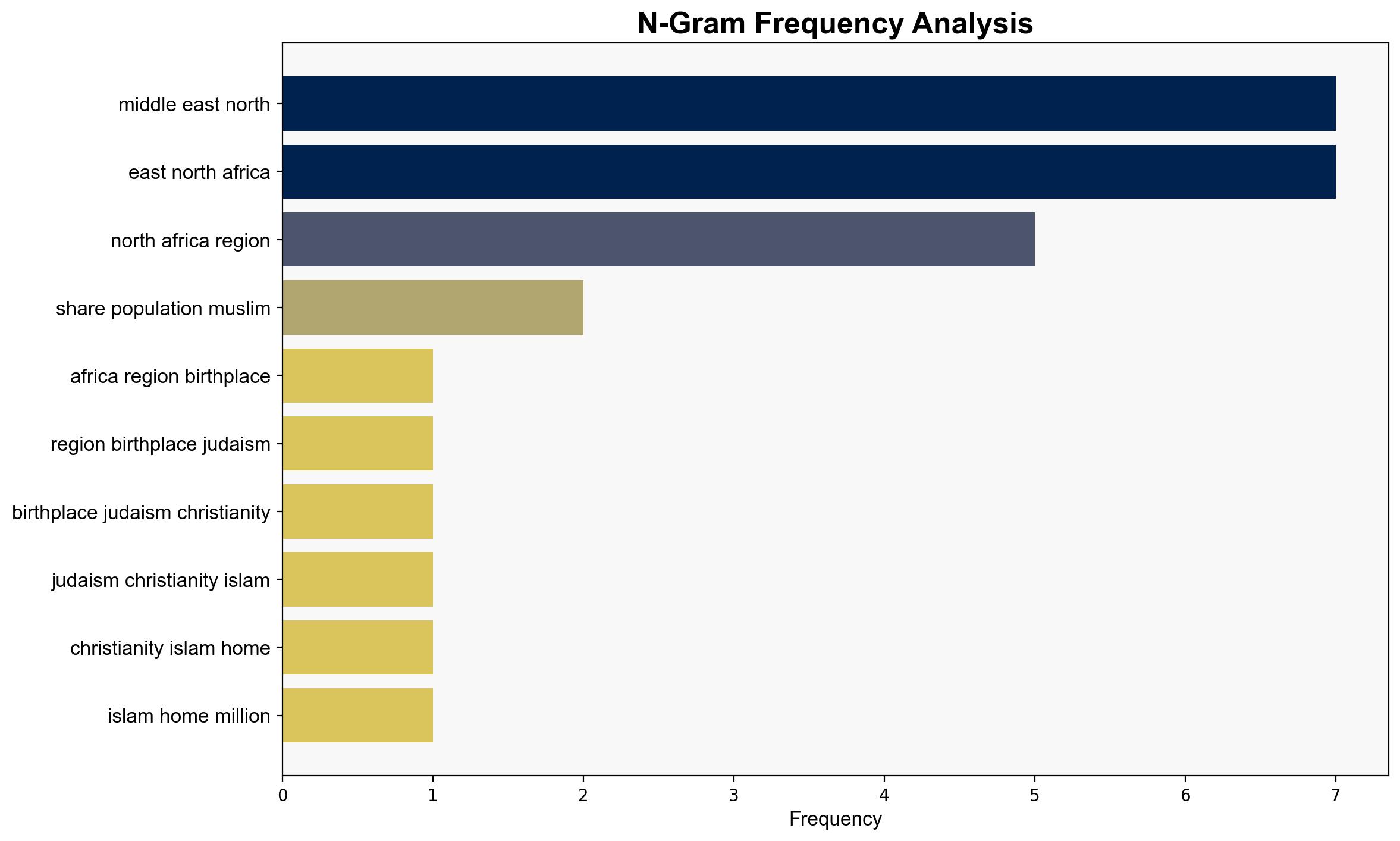12 Religion in the Middle East and North Africa – Pew Research Center
Published on: 2025-06-09
Intelligence Report: 12 Religion in the Middle East and North Africa – Pew Research Center
1. BLUF (Bottom Line Up Front)
The Middle East and North Africa (MENA) region is characterized by a high concentration of Muslims, with significant minority populations of Christians and Jews. Recent demographic shifts, including the influx of Syrian refugees into Lebanon and increased immigration to Oman, are altering religious compositions in these countries. These changes have strategic implications for regional stability and inter-religious dynamics. It is crucial to monitor these trends to anticipate potential socio-political impacts.
2. Detailed Analysis
The following structured analytic techniques have been applied to ensure methodological consistency:
Causal Layered Analysis (CLA)
– **Surface Events**: The influx of refugees and immigrants is visibly altering the demographic landscape.
– **Systemic Structures**: Regional migration policies and economic opportunities drive these demographic changes.
– **Worldviews**: The perception of religious identity plays a critical role in societal cohesion.
– **Myths**: The historical narrative of religious coexistence and conflict influences current inter-religious relations.
Cross-Impact Simulation
– The demographic shifts in Lebanon and Oman may influence regional power dynamics and inter-state relations, particularly concerning resource allocation and political alliances.
Scenario Generation
– **Best Case**: Peaceful integration of diverse religious groups leading to enhanced regional stability.
– **Worst Case**: Heightened sectarian tensions resulting in conflict and further displacement.
– **Most Likely**: Gradual demographic shifts with intermittent tensions but overall stability maintained.
3. Implications and Strategic Risks
– **Political**: Changes in religious demographics could influence electoral outcomes and policy decisions.
– **Economic**: Increased immigration may strain resources but also boost economic activity through labor contributions.
– **Social**: Potential for increased sectarian tensions if integration efforts are inadequate.
4. Recommendations and Outlook
- Enhance monitoring of demographic trends to anticipate and mitigate potential conflicts.
- Promote policies that support the integration of diverse religious groups to foster social cohesion.
- Develop scenario-based strategies to prepare for potential shifts in regional dynamics.
5. Key Individuals and Entities
– Conrad Hackett
– Marcin Stonawski
– Yunpe Tong
– Stephanie Kramer
– Anne Shi
– Dalia Fahmy
6. Thematic Tags
national security threats, demographic changes, regional stability, inter-religious dynamics





